Arcangelo Sassolino talks toymaking, never being satisfied and finding kindred spirit in Caravaggio
Arcangelo Sassolino’s work for MONA involves heating molten steel to 1500C and dripping sparks from the ceiling. How did the Italian star become one of the world’s most exciting sculptors?
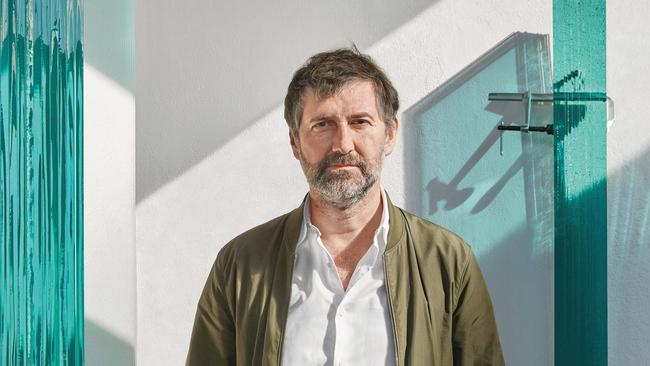
You were a toymaker before your career in art. How did you enter into that (rather quaint) profession? When I was a child, I spent most of my time in the garage in our house in Vicenza [in Italy], building my own toys. I enrolled in university, but never attended a single day because I patented a toy. It was a kind of puzzle, not as sophisticated as a Rubik’s cube, but it was bought by a company in New York. I moved there for just a few months during the summer and ended up staying for six years.
What changed for you then? When I was living in New York, I went to MOMA for a Matisse retrospective. My life changed that day. I understood that all that passion for working with my hands, and my vision of the world, was not about making toys. It was about making things that have to do with philosophy, with poetry, with who we are as individuals.
You’re famous for creating large-scale kinetic sculptures that seem to bend the laws of physics. How do these works come about? Luckily, ideas are something I have a lot of. Some can sit with you for years. They are like flowers; they bloom, they develop. But I believe that an artist has to keep betraying himself or herself. Once my idea is done, or once I see the experiment is working, that idea already belongs to the past.
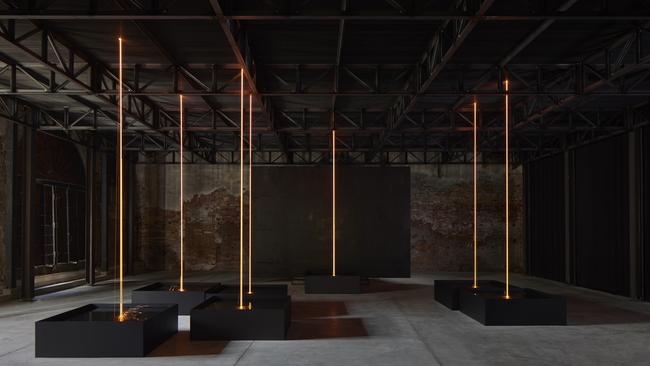
So you move straight on to the next challenge? I have to move forward. I feel an emptiness that has to be filled with something new. In a way, it’s fantastic because it keeps pushing me forward to find new technology – but at the same time it’s frustrating because I’m never happy. I feel like the next work is the one that will finally resolve everything!
And yet it probably won’t… [Laughing] That’s right. It won’t. I’m glad you understand.
Now to your fiery, dark, and yet illuminating work for Tasmania’s MONA, titled In The End, The Beginning — a response to Caravaggio’s1608 oil painting The Beheading of Saint John the Baptist. Why Caravaggio? I don’t want to be presumptuous, but I think I understand Caravaggio well. He had a need to stay completely in touch with reality. I feel that approach to art completely. I too need to show worksthat have no filter, where there is no allegory. And yet Caravaggio was such a turning point in the history of art, the only way to try to face him was to create a new light, something that was extreme, dangerous...
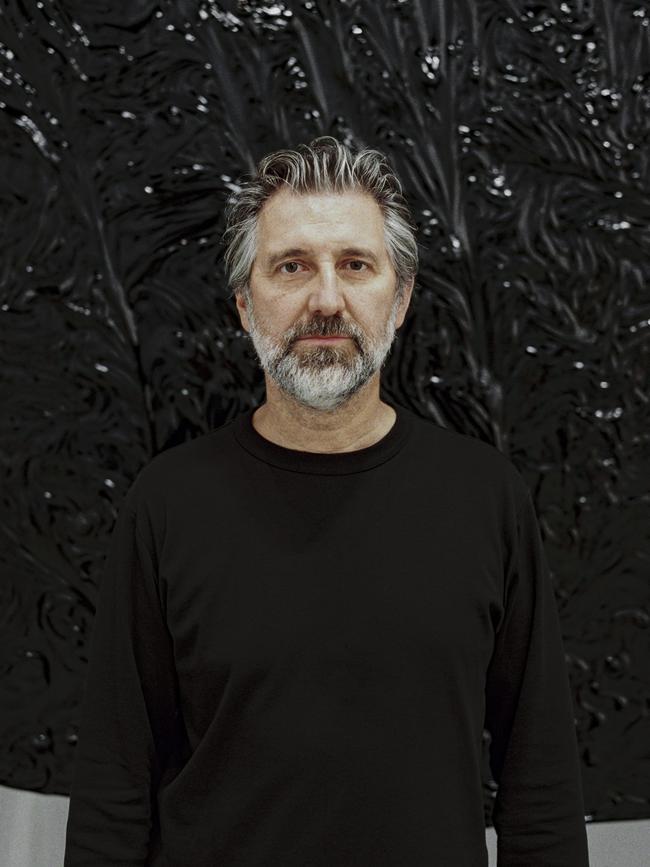
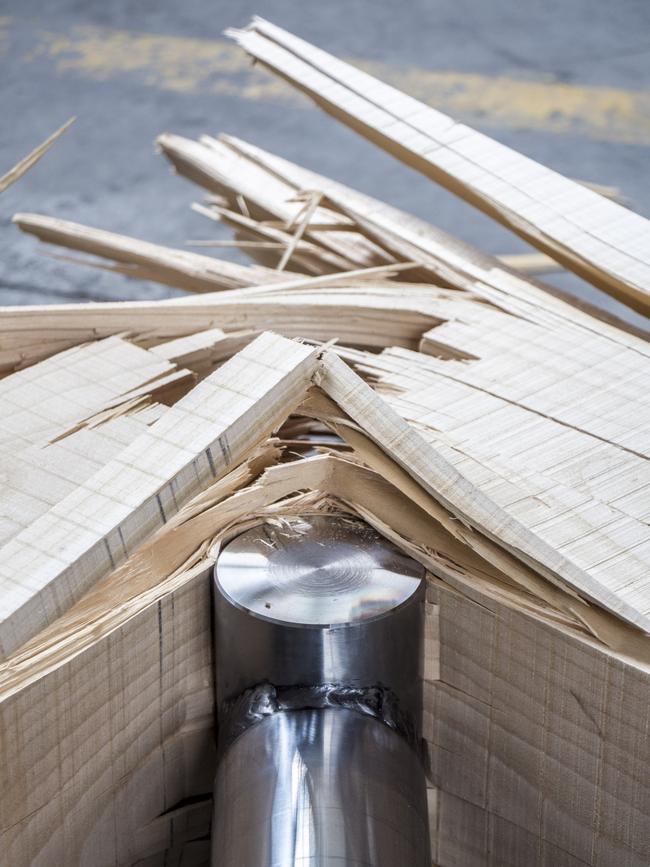
So, you end up with something that involves heating molten steel to 1500C and creating sparks that drip from the ceiling...? Yes, something that cannot be touched, that would almost burn your eyes. The light that is produced by melting steel is really special.
You will also exhibit panes of glass under the weight of boulders, and wooden beams crushed by hydraulic pressure... So we’re getting the feeling here that you like to push materials to their limit? It’s amazing how different materials like steel, wood, paper, rubber, glass and stone come alive if we find a way to work with them. Every material has a specific soul. We are also living in a moment in history where science and technology allow us to enter into the material’s DNA, its atoms, and its chemistry and this is what I do. Right now, fluid is very important to me. I would never have thought of using a fluid such as industrial oil but now I’m obsessed with it.
OK wait, so you’re making sculptures with — fluid?Originality is often scarce in art and yet... Fluid is a material, more than any other, which resembles time. I laugh when people say, “Oh, everything has already been done.” That is so stupid. It’s so untrue. Everything still has to be done. All of the future has to be done! And that idea, for an artist, is very important.
In The End, The Beginning opens at the Museum of Old and New Art (MONA) in Hobart on June 7


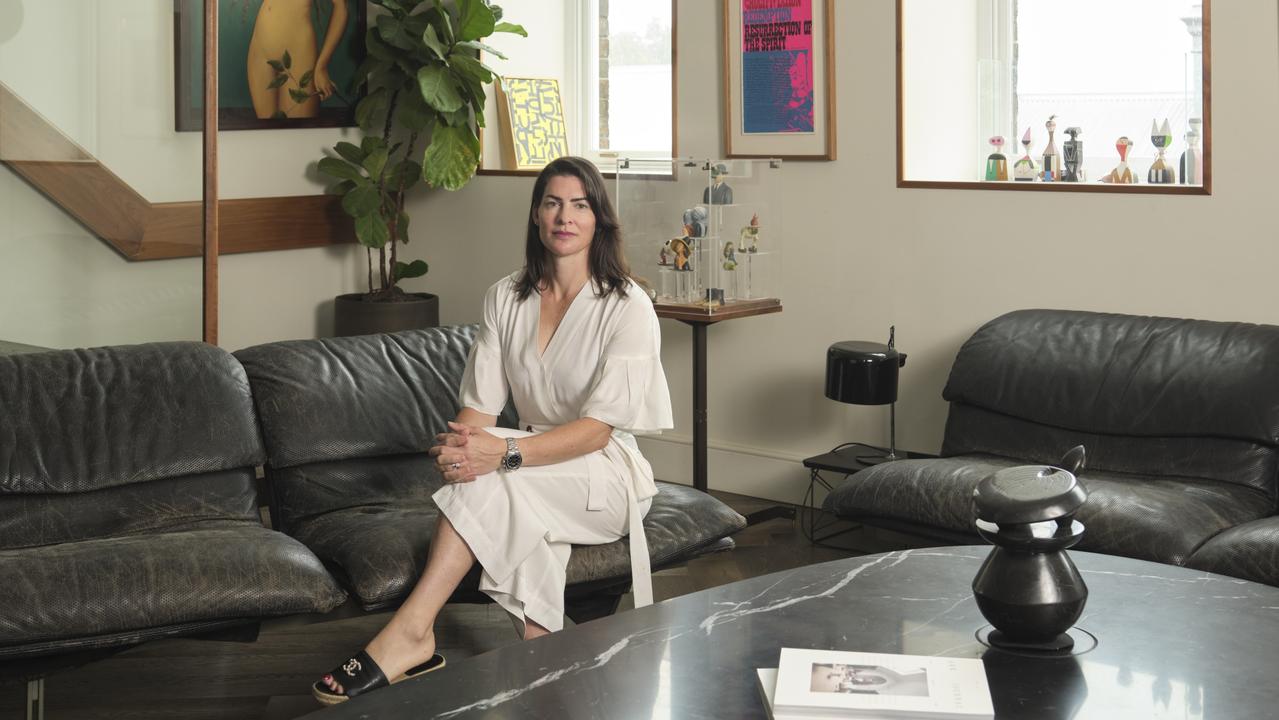
To join the conversation, please log in. Don't have an account? Register
Join the conversation, you are commenting as Logout